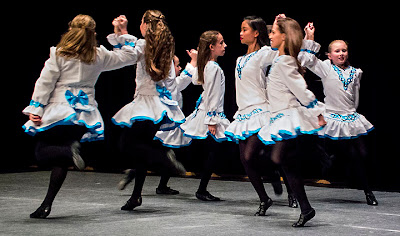For a technical report go to Camera Debate
A good technical look at the Panasonic FZ200 can be found on Camera Debate. Interestingly, they compared the FZ200 to the Canon SX50 HS and the Canon won. They went for high ISO quality over the constant f/2.8 aperture.
See images taken by with an FZ200 at CNET Reviews
If you want to see a good selection of images taken under a good mix of conditions, click the link to CNET Reviews. Do you agree with Camera Debate that the digital grain ruins the images by ISO 800? Based on the photos posted by CNET, I believe I could live with the grain at ISO 800. But, I would find ISO 1600 getting a little too rough for some applications.
 |
| FZ200 quality at f/2.8 and 600mm equivalent lens length, posted by Panasonic. |
My post
I worked as a staff photographer for nearly four decades in the newspaper business. My first camera kit was based on a 1960s Pentax Spotmatic body mated with three lenses: A 28mm, a 135mm and a 300mm telephoto. The 300mm was the slowest lens of the bunch at f/4.0.
The Pentax wore out rather quickly, dying from way too much use. It wasn't designed to take a thousand pictures a week, fifty thousand a year. I replaced that first kit with a Nikon F2 plus another gaggle of prime lenses. I loved my Nikkor 28mm f/2.0. It was some piece of glass. The rest of my kit simply duplicated the Takumar (Pentax) lens based kit.
I stayed with Nikon for years, upgrading the lenses from prime to zooms as soon as zooms that held a constant aperture of f/2.8 hit the market. When the paper at which I worked offered to pay for our personal camera kits, I switched to the Canon EOS line of professional DSLRs. I got by with two zooms lenses plus a 200mm, f/1.8, telephoto which converted to 400mm, f/3.6, when used with a 2X teleconverter.
When I retired, the paper kept my gear. I found myself forced to embrace new cameras and tackle a new approach to photography in my senior years. Money and a bad back ruled out replacing my work gear with more Canon pro stuff. I decided to buy two cameras: A Canon S90 which offered a fast f/2.0 aperture when used at wide angle (28mm) and a Fujifilm HS10 superzoom with a lens capable of emulating a 24-720mm zoom on a 35mm camera.
 |
| Taken with my Fujifilm HS10 zoomed to the max, this is a great image. |
I love the Canon S90. I have absolutely no complaints with that camera. I do not hesitate to recommend its latest incarnation, the Canon S110, to those looking for a compact point-and-shoot. It does have some competition today, there are other f/2.0 wide angles being offered, google the reviews. Maybe there is a better choice today but you can't go far too wrong with the Canon.
 |
| Orchid shot with Canon S90 at show in a school gym. |
The biggest problem has been lens speed. Both cameras are damn slow when zoomed out to telephoto. f/5.6 is just not good enough. One can make do. One can get by. But in professional do-or-die situations, these cameras have serious limitations.
My Fujifilm HS10 has had a rough life. It has been dropped into coarse gravel and onto a hard tile floor. It keeps going, so I must give it an A- for solid build quality. It gets the minus because the camera back monitor blinks on and off at times and something else is amiss inside the camera. A colour cast is appearing in some images of late. It is time to think about a replacement for the HS10.
 |
| I've had good luck shooting with my HS10. I had very good luck. |
My choice for the best all-around super-zoom available today is -- drum roll, please -- the Panasonic Lumix FZ200. This camera offer a 25mm to 600mm zoom with a constant f/2.8 aperture used wide open. This brings back memories of my beloved pro lenses.
 |
| My Fujifilm HS10 took this. The FZ200 will make it easier. |
If you are actually a working pro, the FZ200 will not replace your Nikon or Canon DSLR with assorted detachable lenses, but if you are anything less, say a reporter, I'd give the purchase of the FZ200 a lot of thought.
There are reviews on the Web of the FZ200. But in my experience, what is important is not the grain that appears at IS01600, or the number of lines per mm that can be captured with the lens zoomed all the way out, what's important are the moments that can be captured. Most of us are not looking for ultimate quality and quibbling over tonal range, most of us simply want a decent shot Bruce Cockburn in concert for our scrapbook. A large aperture (f/2.8) should make this easier. I liked what I was getting before, I can't wait to see what I'm going to be able to achieve with an FZ200.
 |
| An f/2.0 aperture made capturing this moment possible. Thank you Canon S90. |










